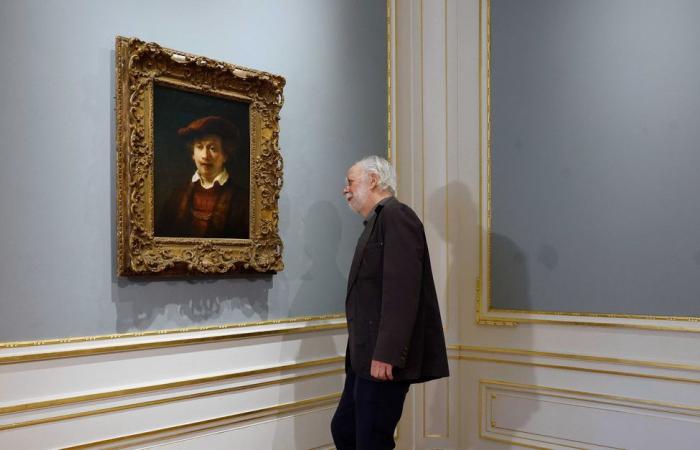A self-portrait of Rembrandt? Or a portrait of Rembrandt by or after Ferdinand Bol? New York-born Rembrandt expert Gary Schwartz (82) has no doubts. The portrait of the man with a red beret, which will be on display in the Escher museum in Het Paleis in The Hague from Tuesday, is one of approximately fifty painted self-portraits by Rembrandt.
Schwartz wrote a book about the painting that will be published on Friday: Rembrandt with red beret. The wild adventures of a sedate self-portrait. In it he extensively describes the insane wanderings of the painting. He also disputes the objections that led to the painting no longer being recognized as a Rembrandt by art historians since 1969.
Unskilled overpainting gave a false impression of the work’s quality and has misled art historians, Schwartz argues in the book. His conclusion is based on new technological research by a scientific institute in Zurich. This shows that only the face in the painting still belongs to the original painter. Schwartz: “And whoever looks at that face will find it difficult to see anything other than a self-portrait of the master himself.”
Photo Wbooks
Playground between governments
The painting, now owned by a German private collector, will hang in Escher in Het Paleis until the end of January. This means that the canvas is back where it hung between 1850 and 1894. At the time it belonged to Prince Hendrik, son of King Willem II, who hung it in his Lange Voorhout Palace, the current museum.
After Hendrik’s death, his sister Sophie inherited the work and it disappeared from the Netherlands. It was stolen from the Weimar Museum in 1921 and resurfaced in the US in 1945. In the Cold War, it became a plaything between the US and German governments. The US government decided to return the painting to Germany in 1967, where it was successfully claimed by an heiress.
Until 1968, the painting was known as a self-portrait by Rembrandt. But in that year the German-Dutch art historian Horst Gerson wrote it off in his catalog raisonné of Rembrandt works as a portrait of Rembrandt from or to Bol.
Fantastic history
Gerson’s attribution was not taken seriously by “any Bol expert,” says Schwartz when asked. The members of the Rembrandt Research Project, led by Ernst van de Wetering, took a detailed look at the portrait in the Rijksmuseum in 1980. Schwartz: “They were guided by their own bias. Van de Wetering has written extensively about the portrait and in my book I refute all his arguments why it is not a self-portrait by Rembrandt. Tell me why it isn’t.”
Schwartz does not think the attribution to Rembrandt is the most important thing about his book, he says. “The fact that I was able to reconstruct the fantastic history of this painting with numerous unpublished documents, including from the Royal Household archives and archives of the American and German governments, is much more important.”
He is also pleased that the painting can be seen again in the Netherlands after almost 125 years. “It fills me with pride that I managed to get the owner to do this.”






